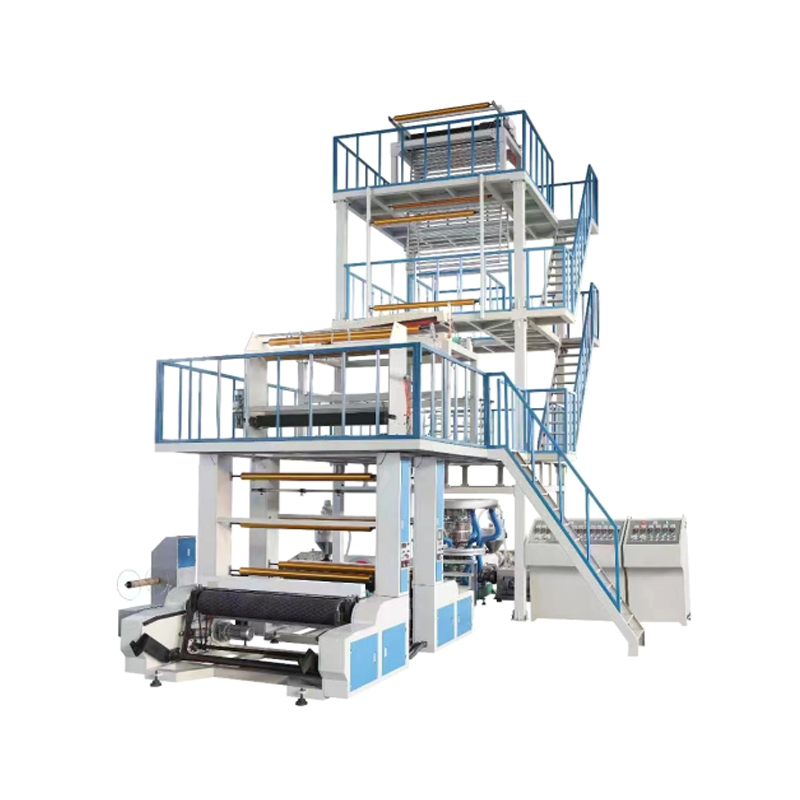ABC Blown Film Machines Raise the Bar in Multi-Layer Film Production
 By Admin
By Admin
In the rapidly advancing world of flexible packaging, ABC Blown Film Machines are setting new standards in material performance, film customization, and production consistency. Known for their three-extruder, three-layer co-extrusion capability, ABC systems have become the gold standard for producing high-performance films used in industries such as food packaging, medical supplies, agriculture, and industrial wrapping.
1. Independent Layer Control for Customization
At the core of ABC blown film technology lies the ability to control each of the three layers independently. Each extruder feeds its own layer—A, B, and C—allowing manufacturers to precisely engineer the material composition of the inner, middle, and outer layers.
This enables custom film structures tailored to specific applications: for instance, using high-gloss materials on the outside for visual appeal, barrier materials in the core for moisture and oxygen resistance, and sealant-friendly resins on the inside for reliable sealing performance.
Such flexibility makes ABC machines the top choice for high-performance films, such as those used in food packaging, where multi-functionality and compliance with safety standards are non-negotiable.
2. Barrier and Mechanical Properties
One of the celebrated performance traits of ABC machines is their ability to produce multi-functional barrier films. By combining materials like EVOH, nylon, metallocene PE, and LLDPE in distinct layers, ABC machines can manufacture films that offer moisture, oxygen, aroma, and UV resistance.
In addition to barrier properties, ABC film structures demonstrate improved tensile strength, tear resistance, and impact durability—essential for vacuum packs, shrink films, and heavy-duty bags. This performance makes ABC machines particularly valuable in high-end applications requiring shelf-life extension and physical protection.
3. High Film Clarity and Uniform Thickness
ABC Blown Film Machines deliver films with optical properties, including clarity, gloss, and haze control. The ability to assign transparent or matte materials to specific layers allows producers to fine-tune the film's appearance according to branding and visibility requirements.
Furthermore, these machines are designed for outstanding gauge control. Equipped with features like automatic thickness measurement systems, air ring cooling, and precise die gap adjustment, ABC systems ensure uniform film thickness, which improves printing quality and sealing performance while reducing material waste.

4. Capability for High-Performance Film Structures
Unlike simpler co-extrusion setups (e.g., ABA), ABC configurations can handle technically demanding films such as laminated base films, shrink hood films, stretch hood films, and medical-grade packaging.
This includes the capability to run specialty materials like EVA, PA, and biodegradable blends without compromising process stability. The versatility in resin processing means manufacturers can quickly shift from commodity-grade films to premium-grade barrier films on the same machine.
Such adaptability gives ABC blown film lines a significant competitive edge in high-value markets that demand customization, performance, and compliance with regulatory standards.
5. Energy-Efficient and Intelligent Design
Modern ABC machines are equipped with servo-driven motors, high-efficiency heaters, and automatic film thickness control to optimize energy use. Some systems now include smart energy monitoring modules that track real-time power consumption, helping manufacturers reduce their carbon footprint.
Many ABC systems also integrate with Industry 4.0 platforms, offering real-time performance monitoring, predictive maintenance alerts, and recipe storage for quick changeovers. These smart functions enhance uptime and product consistency while reducing operational overhead.
6. Seamless Integration with Downstream Equipment
ABC Blown Film Machines are engineered for compatibility with high-speed downstream processes such as printing, lamination, slitting, and bag-making. Film rolls from ABC lines exhibit better windability and edge quality, which enhances performance in post-processing stages.
Some advanced models also support inline printing and surface treatment systems, further streamlining the production workflow and cutting total production time.




